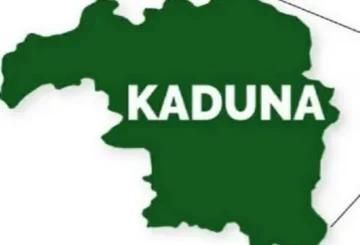
Crude oil prices rose over one per cent yesterday, pushing the global benchmark, Brent above $70 per barrel, as rhetoric from the United States, Iran and Iraq fanned tensions in the Middle East after a US air strike that killed a top Iranian military commander.
Also, oil output by the Organisation of Petroleum and Exporting Countries (OPEC) fell in December 2019 as Nigeria and Iraq adhered more closely to pledge reductions and top exporter Saudi Arabia made further cuts ahead of a new production-limiting accord, a Reuters’ survey found.
Brent crude futures soared to a high of $70.74 a barrel, up 78 cents, or more than one per cent, from Friday’s settlement.
US West Texas Intermediate crude was at $63.64 a barrel, up 59 cents, or 0.9 per cent, after touching $64.72, the highest since April.
The gains extended Friday’s more than three surge after a US air strike in Iraq killed Iranian military commander, Maj. Gen. Qassem Soleimani, on Friday, heightening concerns about an escalation in conflict in the Middle East and the possible impact on oil supplies.
The region accounts for nearly half of the world’s oil production, while a fifth of the world’s oil shipments pass through the Strait of Hormuz.
Reuters reported that on Sunday, US President Donald Trump threatened to impose sanctions on Iraq, the second largest producer among OPEC members, if U.S. troops were forced to withdraw from the country.
Baghdad had earlier called on the US and other foreign troops to leave Iraq.
Trump also said the United States would retaliate against Iran if Tehran were to launch a reprisal.
Reuters quoted an analyst as saying that while the closure of the Strait of Hormuz remains a very unlikely event, the deterioration in Iraq bears supply risks.
The Economist Intelligence Unit raised its first quarter projection for Brent by $5 to $70 a barrel, assessing that Iran would likely seek to avoid an open conflict.
“We maintain our forecast that the two countries are likely to avoid outright war. Iran is not in a position financially, after more than a year of crippling US sanctions, to finance a lopsided war with the US,” EIU global economist Cailin Birch wrote in a note sighted by Reuters.
Meanwhile, the oil output by OPEC fell in December 2019 as Nigeria and Iraq adhered more closely to pledge reductions and top exporter Saudi Arabia made further cuts ahead of a new production-limiting accord, a Reuters survey found.
On average, the 14-member OPEC pumped 29.50 million barrels per day (bpd) last month, according to the survey. That is down 50,000 bpd from November’s revised figure.
Crude prices have rallied to above $70 a barrel in 2020, extending a 23 per cent gain in 2019, supported by ongoing OPEC-led curbs and increased Middle East tensions after the killing of the top Iranian general.
OPEC, Russia and other allies, known as OPEC+, had an agreement to reduce supply by 1.2 million bpd in 2019. OPEC’s share of the cut was about 800,000 bpd, to be made by 11 members, with exemptions for Iran, Libya and Venezuela.
At meetings in December, OPEC+ agreed to make an additional cut of 500,000 bpd as of January 1, 2020.
The 11 OPEC members bound by the agreement easily exceeded the pledged cuts, thanks in large part to Saudi Arabia and its Gulf allies cutting more than called for to support the market.
The December survey suggests Nigeria and Iraq, both laggards in making cuts in 2019, achieved some progress. Compliance rose to 158 per cent in December, the survey found, from 153 per cent in November.
OPEC’s largest production drop of 80,000 bpd was in Nigeria, which exported less crude according to ship-tracking data and loading schedules.
Much of this decline came from reduced shipments of Bonga crude, which traders say has been undergoing maintenance.
OPEC’s two top producers, Saudi Arabia and Iraq, each reduced output by 50,000 bpd. This puts Saudi supply more than 500,000 bpd below its 2019 target.
Iraq’s compliance, at 59 per cent, is far lower than Saudi Arabia’s but is up from 23 per cent in November.
The United Arab Emirates made a further voluntary curb in December, while Kuwaiti output was steady.
Among countries pumping more, the largest increase was in Angola, which boosted exports after maintenance affecting the Girassol crude stream had curbed supplies.


